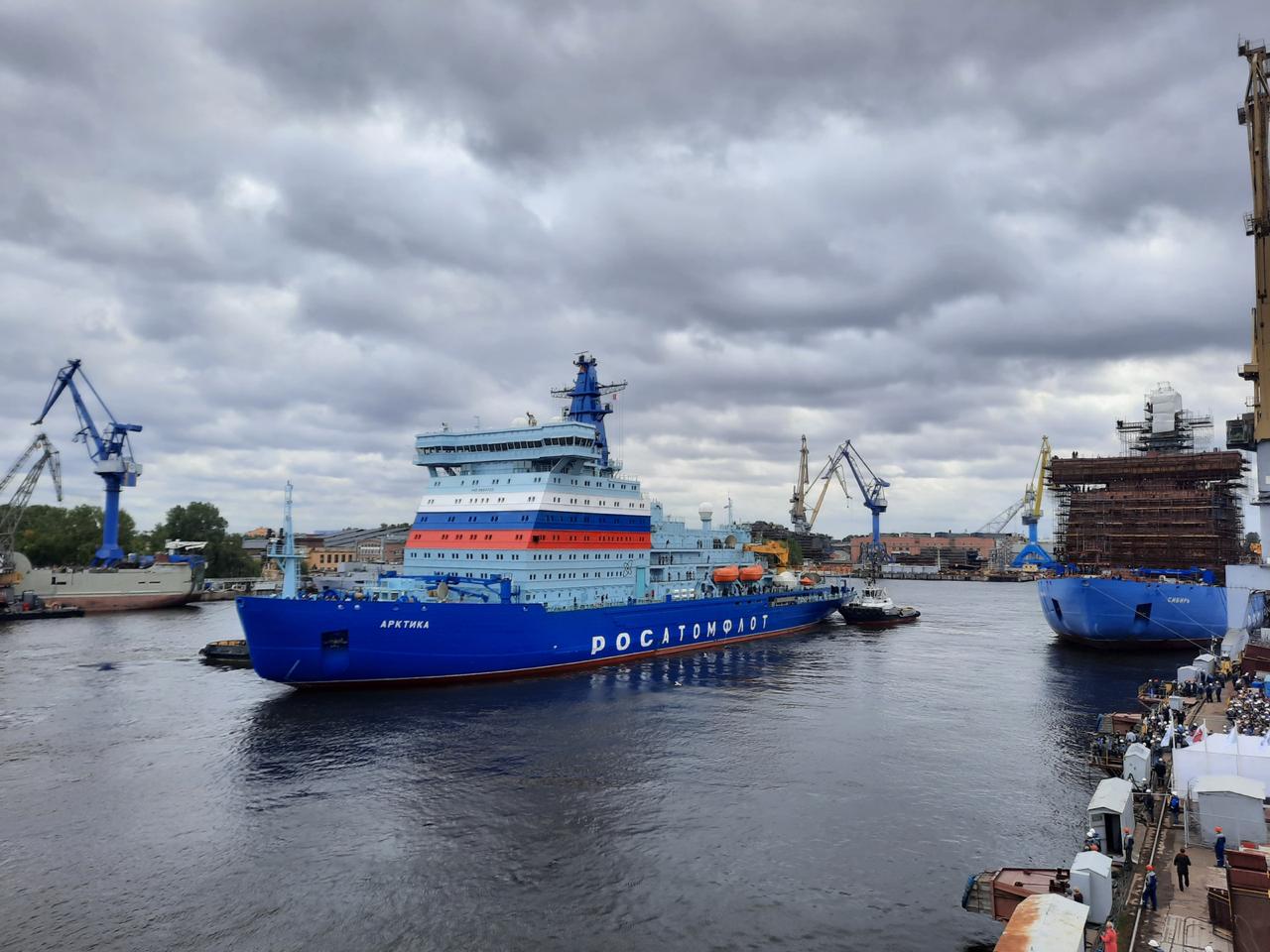On September 22, Arktika, the lead universal nuclear-powered icebreaker, departed from the completion embankment of the Baltic Shipyard in St. Petersburg towards the Murmansk sea port. The passage is planned to take about two weeks. During this time, the nuclear icebreaker will be tested in ice conditions.

“Rosatomflot is expecting the arrival of the lead universal nuclear-powered icebreaker,” said Mustafa Kashka, Director General of FSUE Atomflot. “The passage is planned to take about two weeks. During this time, the nuclear icebreaker will be tested in ice conditions.”
During the passage, the Arktika will enter the ice, moving north of Franz Josef Land, (83rd parallel north). This will enable to adjust the system of electric motion of the nuclear-powered vessel in ice conditions.
“The establishment of a modern nuclear-powered icebreaker fleet in Russia, capable of providing a regular year-round and safe navigation throughout the waters of the Northern Sea Route is a strategic goal for our country”, said Vyacheslav Ruksha, Deputy Director General and Director of the Northern Sea Route Directorate of Rosatom State Corporation. “I would like to thank the shipbuilders and all those who were involved in this project for their efforts. I am sure that further icebreakers of the project 22220 will be successfully constructed and will help to fulfill all Russia’s objectives in the Arctic Ocean.”
Sailing to the port of registry was preceded by sea trials of the vessel, the final stage of which was completed on September 16. An inspection of mechanisms and equipment of the nuclear-powered vessel was carried out in the Gulf of Finland and Baltic Sea. Experts tested the electric power system under running conditions and maneuverable characteristics of the vessel under different draft variants.
Background:
The lead universal nuclear icebreaker of project 22220 is being built by the OJSC Baltic Shipyard on commission of Rosatom State Atomiс Energy Corporation. The keel for the icebreaker was laid on November 5, 2013 and the launch of the vessel took place on June 16, 2016. It will be the largest and most powerful nuclear icebreaker in the world. The icebreaker is designed for independent pilotage of ships, including large-capacity ones, and for leading the fleet in the Western Arctic region. The vessel’s dual-draft concept allows for operating it both in the Arctic and in the mouths of the polar rivers, in particular in shallower areas of the Yenisei estuary and the Ob Bay area.
Main characteristics of the vessel: length: 173,3 meters (160 m, dwl); width: 34 meters (33 m, dwl); height - 15.2 meters; power capacity: 60 mw (on propeller shafts); cruising speed: 22 knots (in clear water); draft - 10.5 meters/8.65 meters; maximum ice penetration - 2.9 meters; displacement - 33 540 tons; estimated service life - 40 years; number of crew - 53 people.
“Iceberg” Central Design Bureau designed the technical project of the icebreaker in 2009. The icebreaker is equipped with specially designed two new generation RITM-200 reactors and a steam turbine unit with an overall power capacity of 175 MW. RITM-200 is an innovative and unique design developed by of one of the oldest design bureaus of the nuclear industry - OKBM Afrikantov (Nizhny Novgorod, part of JSC Atomenergomash). The rich experience of the construction and operation of reactors for nuclear icebreakers as well as modern trends of the world nuclear power engineering were the basis for the design of RITM-200. It includes two reactors with the of 175 megawatts each. RITM-200 is almost twice as light and compact as previous reactors, therefore it is cheaper in terms of material intensity and takes less space on the vessel and thus more economically efficient. Such a solution is structurally achieved due to the fact that steam generators, which were previously located outside the reactor, are now located directly in it, which is called an integrated layout.
The nuclear-powered ship was named after the legendary icebreaker “Arktika”, which became the first ship in history to reach the North Pole in the above-water position.







